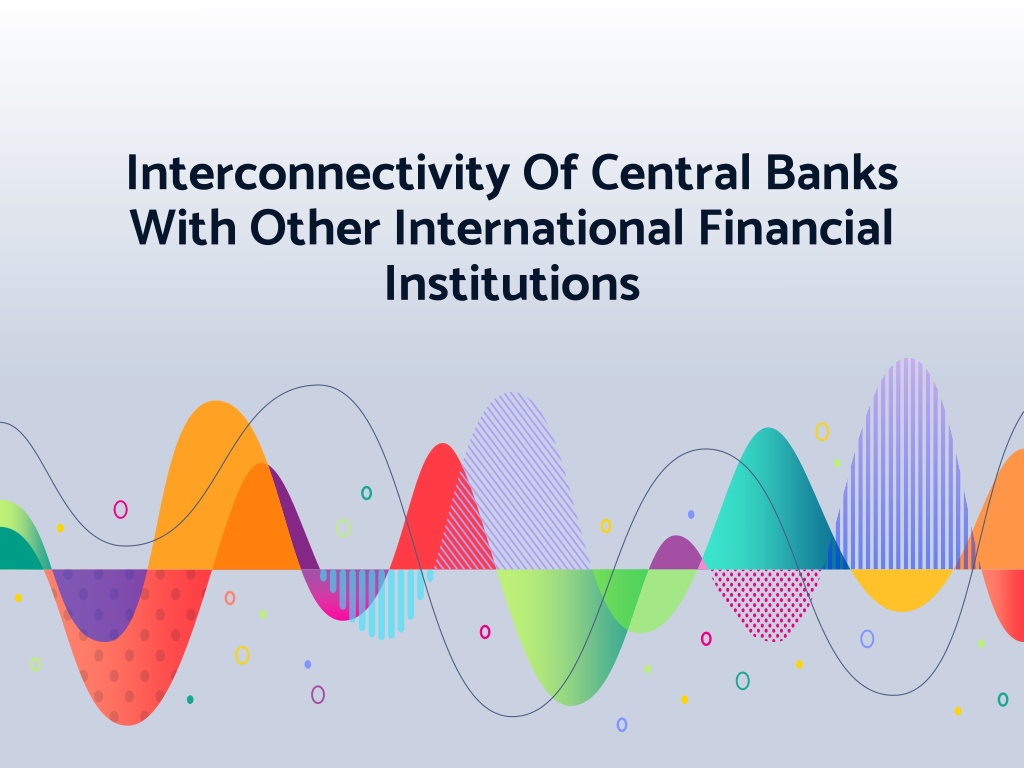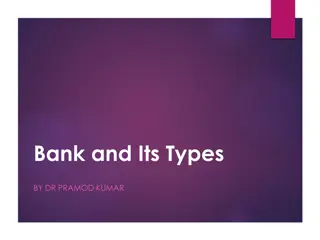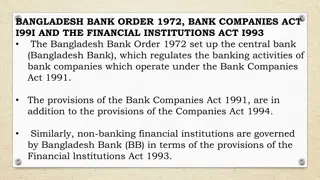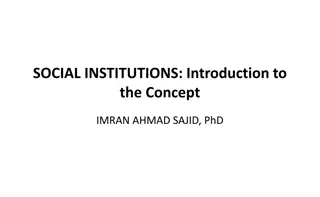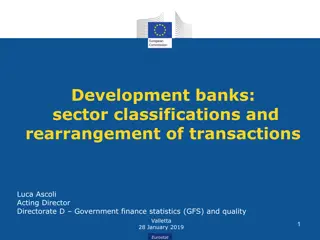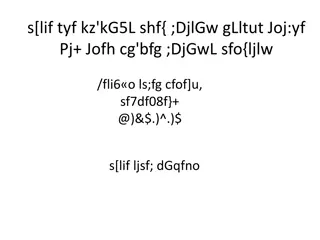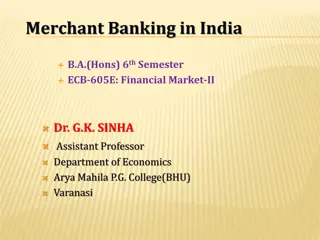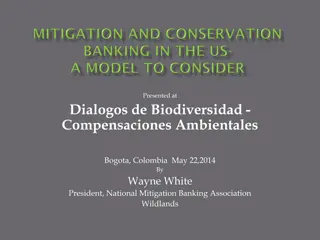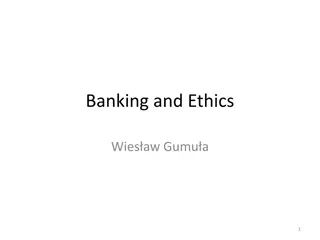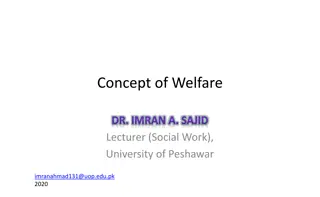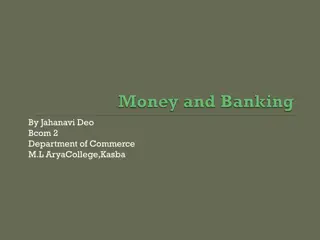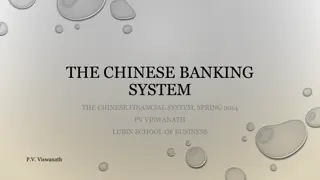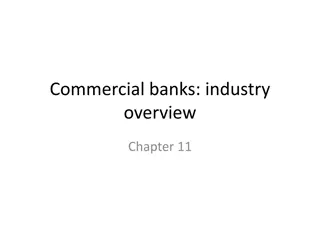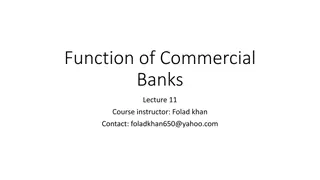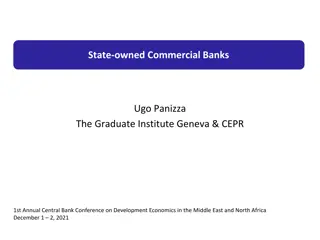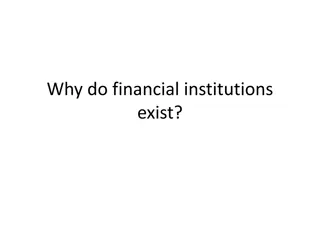Role of Central Banks in International Financial Institutions
Central banks play a crucial role in the interconnectivity with international financial institutions like the Asian Development Bank (ADB) and the International Monetary Fund (IMF). These institutions aim to promote economic and social development, ensure exchange rate stability, provide financial assistance to member countries, and facilitate international monetary cooperation. The IMF offers financial assistance through concessional loans and Special Drawing Rights (SDR) to address balance of payment difficulties and promote growth.
Download Presentation

Please find below an Image/Link to download the presentation.
The content on the website is provided AS IS for your information and personal use only. It may not be sold, licensed, or shared on other websites without obtaining consent from the author. Download presentation by click this link. If you encounter any issues during the download, it is possible that the publisher has removed the file from their server.
E N D
Presentation Transcript
Interconnectivity Of Central Banks With Other International Financial Institutions
Asian Development Bank (ADB ) It s establish on 19thDecember, 1966. It s headquarters is at Manila, Philippines. It s a regional development organisation aiming at social and economic development in Asia. At present it has 67 members of which 48 are from Asia and the pacific region and the balance 19 are from outside. The apex body is the Board of governors consisting of one representative from each nation. ADB defined as a social development organisation which aims at sustainable growth, inclusive growth and regional integration. It focuses on 5 important areas namely education, environmental, financial sector development, infrastructure, regional cooperation & integration.
International Monetary Fund IMF was established in 1944, and became operational in 1947 as a result of a conference held at Brettonwoods, New Hampshire in USA. Main aim of the conference was to find ways and means to promote growth and financial stability. An efficient International Monetary System was considered as a prerequisite to promote and regulate international trade.
Objectives:- Ensuring exchange rate stability. Providing assistance to member countries to overcome short term disequilibrium in balance of payments. Promoting international monetary Cooperation.. Assisting the member nations in the expansion of world trade and also ensuring balanced growth. Establishing a multilateral system Providing funds to the members to correct adverse balance of payment position.
Financial Assistance Member nations of IMF gets financial assistance under various schemes. The quantum of credit depends upon the quota of the member i.e., contribution of the member to the fund and also depends on the GDP of the member. The borrowing from IMF by member is termed as drawing rights.
Concessional loans to low income developing countries Special assistance to meet serve balance of payment difficulties, fluctuations in exchange rate etc. Financial support to stabilize the currency To reduce poverty and enhance growth rate To meet emergencies like natural calamities To manage short fall in exports or excess of imports
Special Drawing Right It is not linked to any currency or gold & it is not like any other currency. It is intangible. SDR is an international reserve and is also known as paper gold. Member countries are allotted SDRs according to their quota.
World Bank It is established after the Bretton woods conference in 1944. it provides financial assistance and guidance to developing economies to bring about development. It consists of 5 institutions namely International Bank For Reconstruction And Development ( IBRD ). International Development Association ( IDA) International Financial Corporation ( IFC ) Multilateral Investment Guarantee Agency ( MIGA) International Centre For Settlement Of Investment Disputes (ICSID ) 1. 2. 3. 4. 5.
International Bank For Reconstruction And Development ( IBRD ) It came into existence in 1945. to be a member of IBRD it is compulsory to be a member of IMF. The bank has provided substantial assistance to many developing countries to eliminate poverty and improve the living standards of the people. Assistance consists of financial and consultancy services. Decisions regarding thee operations, policy formation, loan disbursal etc. are taken by consensus. The headquarter of the bank is in Washington. President of the bank is always a national of the United States as it is the largest shareholder.
Main Purpose of Bank Assisting the members nation in reconstruction and development. Providing financial assistance to supplement private capital. Promoting international trade, maintaining equilibrium in balance of payment and improving productivity of labour.
Export Credit Structural adjustment lending Special Action Programme Lending Programmes
Lending programmes are guided by Social principles Funds are made available for project which have direct impact on productivity and accelerate economic growth. The borrowing country should mobilize resources domestically. Before extending credit, the bank conducts a detailed study of the borrowing country s potential. Bank monitors the progress of the project. Bank encourages the domestic private sector to participate actively in economic development
Criticisms The developed countries/world influences the decisions of the bank due to their large contribution and voting rights. Funds available aren t adequate to meet the ever increasing needs of the developing world. World bank has not been successful in mobilizing funds from the rich nations to the poor nations.
International Development Association It is providing assistance and guidance for education, health, sanitation, rural development, etc., by aiming at reducing poverty. IDA established in 1960, mainly focuses on the poorest countries of the world. It provides long term loan at zero percent interest to the poorest countries up to the period of forty years.
Bank for International Settlements It is established on 17thMay,1930, in Basel, Switzerland. It is the world s oldest international financial organisation. It consists of 3 main organs namely General Secretariat, Monetary and Economic Development and the Banking Department. It is administered by Board of Directors has 17 members. The chairman of the board is elected by the members and has term of 3 years. The board meets at least six times in a year.
Functions of BIS:- Forum for cooperation and information Exchange Promotion of Financial Stability Traditional Function Research and Publication Lender of last
Interconnectivity of central banks and the BIS:- The research work is available in its journals and publications which is used to review various economic and financial development s. The databases available with the BIS are valuable to central banks worldwide. Technical Assistance and selective training Provision of a vast database and regular meetings Expert s guidance
Thank Thank you you
